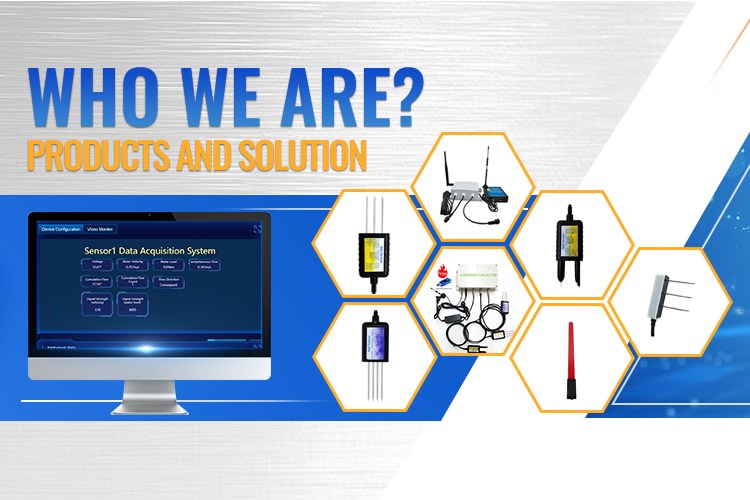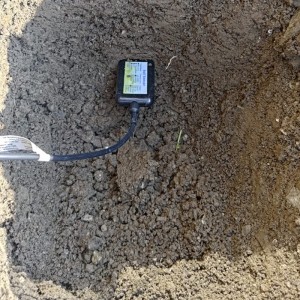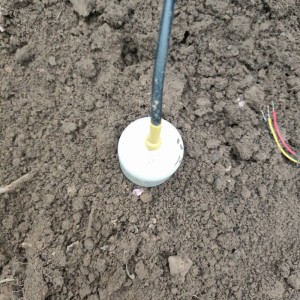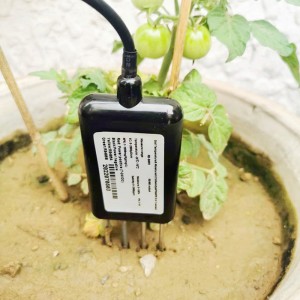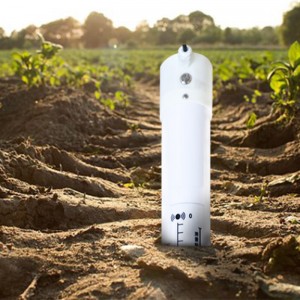In the fields of precision agriculture and environmental monitoring, the understanding of soil conditions is moving from “fuzzy perception” to “precise diagnosis”. The traditional single-parameter measurement can no longer meet the demands of modern agricultural decision-making. Thus, multi-parameter soil sensors that can simultaneously and precisely monitor soil moisture, pH, salinity and key nutrients are becoming the “Swiss Army knife” to unlock the mysteries of soil and achieve scientific management. This article will delve deeply into how this technology is realized.
I. Core Technical Principle: How to “Probe Multiple Objects with One Needle”?
Multi-parameter soil sensors do not simply bundle several independent sensors together. Instead, they work in coordination through a highly integrated system, mainly utilizing the following core physical and chemical principles:
Time domain reflectometer/frequency domain reflectometer technology – Monitoring soil moisture
Principle: The sensor emits electromagnetic waves and measures their changes after propagating in the soil. Because the dielectric constant of water is much higher than that of other substances in the soil, the variation of the overall dielectric constant of the soil is directly related to the volumetric water content.
Realization: By measuring the speed or frequency changes of electromagnetic wave propagation, soil moisture can be directly, quickly and accurately calculated. This is one of the most mainstream and reliable methods for measuring Soil Moisture at present.
Electrochemical sensing technology – monitoring pH value, salt content and ions
pH value: Ion-selective field-effect transistors or traditional glass electrodes are used. The sensitive film on its surface responds to hydrogen ions in the soil solution, generating a potential difference related to the pH value.
Salinity: The level of soil salinity is directly reflected by measuring the electrical conductivity of the soil solution. The higher the EC value, the greater the concentration of soluble salts.
Nutrients: This is the part with the greatest technical challenge. For key nutrients such as nitrogen, phosphorus and potassium, advanced sensors use ion-selective electrodes. Each ISE has a selective response to specific ions (such as ammonium ion NH₄⁺, nitrate ion NO₃⁻, and potassium ion K⁺), thereby estimating their concentrations.
Optical sensing technology – The future star for monitoring nutrients
Principle: Techniques such as near-infrared spectroscopy or laser-induced breakdown spectroscopy. The sensor emits light of specific wavelengths into the soil. Different components in the soil absorb, reflect or scatter this light, forming a unique “spectral fingerprint”.
Implementation: By analyzing these spectral information and combining them with a complex calibration model, multiple parameters such as soil organic matter and nitrogen content can be simultaneously reversibly derived. This is a new type of non-contact and reagent-free detection method.
Ii. System Integration and Challenges: Engineering Wisdom Behind Precision
Integrating the above-mentioned technologies into a compact probe and ensuring its long-term stable operation poses significant challenges:
Sensor integration: How to rationally layout each sensing unit within a limited space to avoid mutual interference between electromagnetic signals and ion measurements.
Intelligent soil sensor system: A complete system not only includes the probe itself, but also integrates a data logger, power management module and wireless transmission module, forming a wireless soil sensor network to achieve real-time data collection and remote transmission.
Environmental compensation and calibration: Changes in soil temperature can significantly affect all electrochemical and optical measurement results. Therefore, all high-quality multi-parameter sensors are equipped with built-in temperature sensors and use algorithms to perform real-time temperature compensation for the readings, which is the key to ensuring data accuracy.
In-situ monitoring and long-term stability: The sensor is designed to be buried in the soil for long-term in-situ monitoring, which means it must have a robust housing to resist corrosion, pressure and root interference. Calibration is another huge challenge. Factory calibration is often insufficient. On-site calibration for specific soil types is crucial for obtaining accurate readings.
Iii. Core Values and Applications: Why Is It Crucial?
This “one-stop” soil monitoring solution has brought revolutionary value:
Comprehensive insight into soil health: No longer view water or nutrients in isolation, but understand their interrelationships. For instance, knowing soil moisture helps explain the effectiveness of nutrient migration; Knowing the pH value can determine the availability of NPK nutrients.
Empower precise irrigation and fertilization: Provide real-time data support for Variable Rate Technology to achieve on-demand irrigation and fertilization, significantly improve water and fertilizer utilization efficiency, reduce costs and minimize environmental pollution.
Realize true real-time environmental monitoring: For scientific research and ecological protection, it can continuously track the dynamic changes of soil parameters, providing valuable data for studying climate change, pollutant migration, etc.
Iv. Future Outlook
In the future, multi-parameter soil sensors will develop towards higher integration (such as integrating soil tensiometer functions), lower power consumption (relying on soil energy harvesting technology), greater intelligence (with built-in AI models for data self-diagnosis and prediction), and lower costs. With the popularization of technology, it will become an indispensable infrastructure in smart agriculture and digital soil management.
Conclusion: The multi-parameter soil sensor has successfully achieved synchronous and precise monitoring of key soil parameters by integrating multiple cutting-edge technologies such as TDR/FDR, electrochemistry, and optics, and by leveraging precise system integration and intelligent algorithms. It is not only the culmination of technology, but also the key for us to move towards a new era of precision agriculture that is resource-conserving and environmentally friendly.
For more soil sensor information, please contact Honde Technology Co., LTD.
WhatsApp: +86-15210548582
Email: info@hondetech.com
Company website: www.hondetechco.com
Post time: Sep-29-2025


